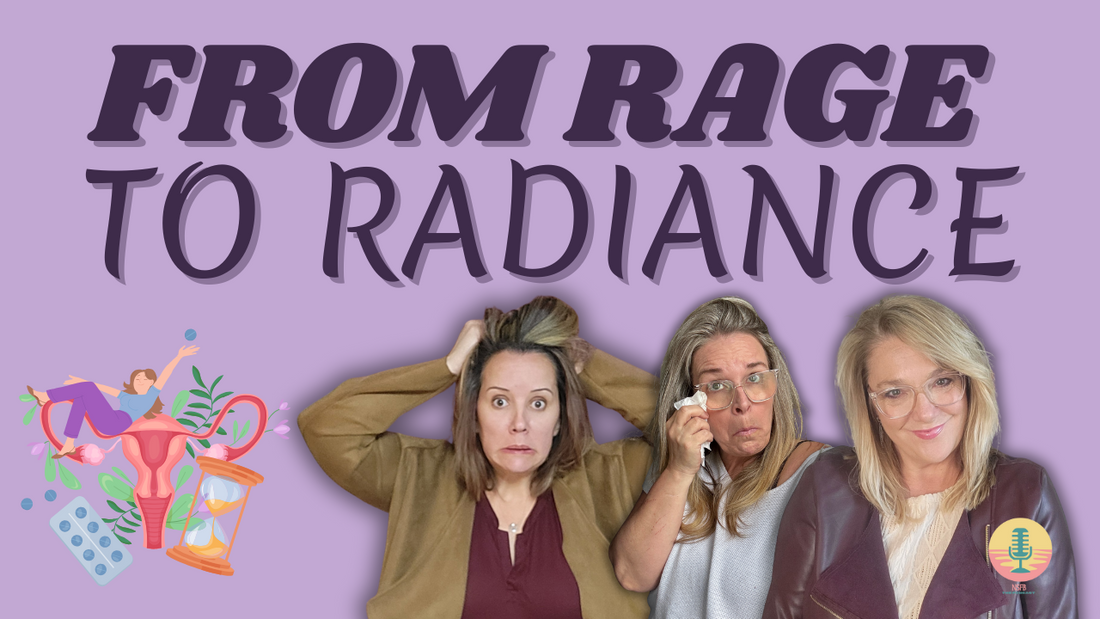
From Rage to Radiance: How Your Cycle Shapes Desire, Energy & Connection
Share
One week you’re glowing with energy, flirting without even trying, and ready to pounce on your partner. The next week? You’re snapping at anyone who looks at you sideways, craving every carb in sight, and wondering why you feel like a cave troll in sweatpants.
It’s not random — it’s your cycle.
Understanding how your menstrual cycle influences your libido, mood, and energy is a game-changer. And here’s the thing: whether you’re still menstruating, navigating perimenopause, or already post-menopausal, you still experience cyclical shifts.
- Let’s break it down, phase by phase, so you can finally stop wondering why you feel like two different people in the same month.
Phase 1: Menstrual Phase (Your Period)
Day one of your cycle starts when your period begins. Hormones are at their lowest: estrogen, progesterone, everything. That’s why you may feel:
-
Low energy
-
Irritability
-
Brain fog
-
Lower sex drive
Cramps and mood dips are common here, but here’s the fun fact: orgasms can actually help ease menstrual cramps. Some people even enjoy period sex thanks to natural lubrication and the pain relief benefits of orgasm.
If that’s you — grab a fluid-proof blanket and make cleanup easy. If that’s not you, no judgment. Rest, comfort, and self-care are equally powerful.
Phase 2: Follicular Phase (Post-Period Glow)
As your period ends, estrogen starts to rise. This is like hitting the reset button:
- Your energy climbs
- Your mood lifts
-
Libido starts to spark again
This is often when you feel optimistic, motivated, and ready to take on more social or creative projects. If you’re tracking your cycle, this is a great time to schedule important events, dates, or even tough conversations — you’ll feel sharper and more upbeat.
Phase 3: Ovulation (Peak Power)
Ovulation is when your body is most fertile — and it shows. Estrogen peaks, confidence soars, and libido often spikes. Research shows women tend to:
- Flirt more
- Dress in ways that feel sexier
-
Radiate energy and magnetism
Partners may even notice subtle shifts in scent and behavior. Many people describe stronger orgasms and heightened arousal during this phase.
It’s also the time when you feel most social. Want to stack your social calendar or plan a big night out? Align it with ovulation week if you can.
Phase 4: Luteal Phase (Premenstrual Rollercoaster)
After ovulation, progesterone rises. For some, this hormone is calming. For others, it’s the start of classic PMS:
-
Mood swings
-
Bloating
-
Anxiety
-
Cravings
-
Fatigue
-
Lower libido (for many, but not all)
This is when you may crave comfort and closeness — or want everyone to leave you the hell alone. Both are normal.
Emotional reactivity often peaks here, which is why small things (like how your partner says something) can suddenly feel like big things. Recognizing that it’s your body’s chemistry at work can save a lot of unnecessary arguments.
Wait — Men Have a Cycle Too?
Yep. Women follow roughly a 28-day hormonal rhythm. Men go through a cycle every 24 hours. Testosterone peaks in the morning (hello, morning wood), and dips by evening, often making them more irritable.
It’s not exactly the same, but it’s worth noticing. When you see mood shifts in your partner, they might just be on their own mini-cycle.
What About Menopause & Beyond?
Post-menopausal? You still experience cyclical rhythms — just without bleeding. Many people notice libido changes, mood fluctuations, or even cravings that follow a pattern.
Hormone replacement therapy (HRT) can stabilize some of these shifts, often leading to more consistent energy and emotional calm. For those who suffered with painful or irregular cycles (like endometriosis), menopause can feel like relief — almost like a gift.
Takeaways
-
Your sex drive and moods aren’t random — they’re tied to your cycle.
-
Some phases bring energy, confidence, and peak libido. Others bring rest, comfort, and introversion.
-
No two people experience their cycle the same way — tracking your own patterns is the best way to understand your body.
-
Men have cycles too — just compressed into 24 hours.
-
Awareness gives you power: instead of fighting your body, you can learn to work with it
👉 Try tracking your cycle for a month. Note your energy, mood, and sex drive. You might be surprised at the patterns you uncover.
